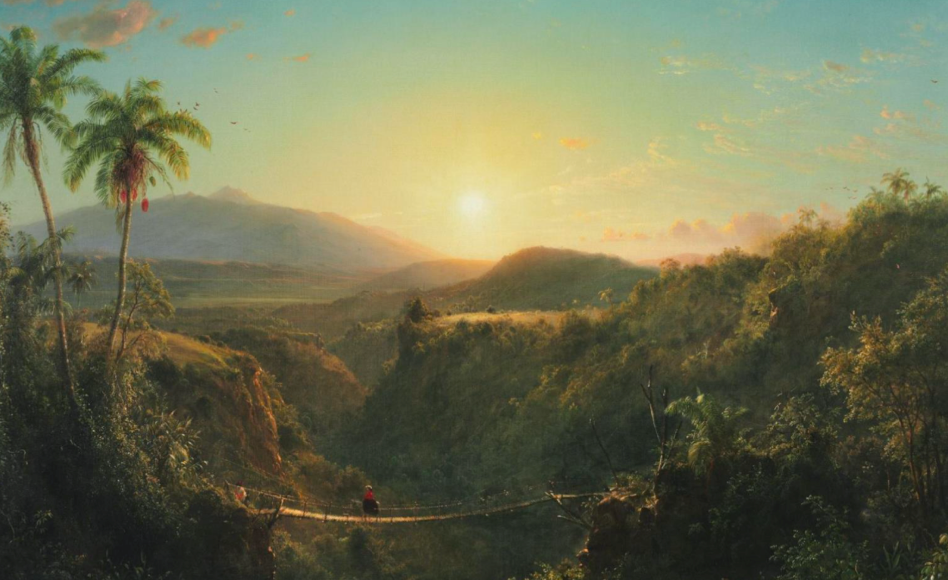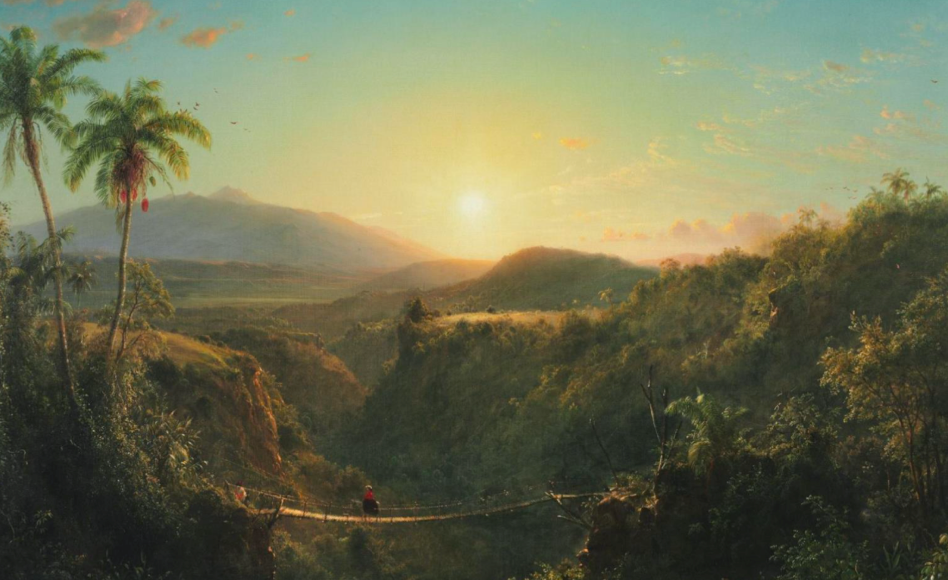Art in Scripture: The Earth Is the Lord'sಮಾದರಿ


Thoughts to Begin
Art holds a profound value as it provides a window to layers of life that artists have found worthy of capturing, thus revealing fears, fascinations, questions, and joys of humanity over the course of history. The practice of contemplating art and Scripture side by side shines a light on places where these compositions overlap. An artist’s earnestly crafted piece can tell a viewer what its creator found interesting enough, perplexing enough, and beautiful enough to try to visually grasp. A passage of Scripture contains stories, prayers, and poetry that reveal God’s character, heart, and design for humanity. The places in which our human longings, as revealed in art, overlap with God’s character, as illustrated in Scripture, are deeply worshipful spaces to sit; so, the following days of this reading plan will pair art and Scripture with connecting reflections to usher us into that space for the Spirit to continually broaden our awareness of God’s ultimate position at the end of our truest human yearnings.
Opening Prayer:
O LORD, as we spend time with art and Scripture today, stir within us those longings that tie us to our awaited togetherness with You.
Rustle within us the ache for truth, goodness, and beauty as we gaze upon the work of this artist’s hands - the product of his own pull toward these eternal qualities of which we get glimpses in this life.
Open our minds to the evidence of our souls’ longings for You, that we may more deeply rejoice in the ultimate satisfaction You will be to these questions, curiosities, and desires.
Guide our eyes to connections between our hearts and minds and those of your children who penned Scripture millennia ago: the questions we ponder, confidence for which we grasp, and beauty we crave.

Pichincha, 1867
FREDERIC EDWIN CHURCH
Oil on canvas, 78.7 x 122.4 cm, Philadelphia Museum of Art; 125th Anniversary Acquisition. Gift of the McNeil Americana Collection, 2004, 2004-115-2, Courtesy of Philadelphia Museum of Art
Pichincha commentary by Amanda M. Burritt (Visual Commentary on Scripture)
"Church sketched Pichincha in Ecuador in 1857 but the painting was completed in his studio in 1867. Church believed a landscape painting did not need to be a literal rendition of a scene in every detail. Rather, it could be playful, showing disparate elements existed in apparent harmony. Pichincha is a composite of different Ecuadorian landscapes, in which palm trees that cannot grow on the Andean high plains nevertheless do so. Church’s displaced trees even bear fruit, evocative of nature’s creativity and abundance despite their unnatural location.
The foreground of Pichincha depicts a deep, dark valley. Transcending the darkness and encompassing the whole composition is a dispersed light which emanates from the central sun. There is a divine protective and life-giving presence over the mountains. The constancy of the rising and setting of the sun is a powerful symbol in a location so close to the equator. Church’s volcano is dormant, but that same volcanic mountain can be an active fearsome force of nature. Tiny people and a donkey cross the chasm on a flimsy looking bridge suspended between two ridges. This act of faith evokes the traveler’s situation in Psalm 121. Danger is all around but there is also the protective presence of the creator, manifested in light and in the richness of creation.
“He will not let your foot be moved; he who keeps you will not slumber”([v.3 NRSV)."
Amanda M. Burritt. 2024. 'Vitality and Power' , inThe Visual Commentary Of Scriptureed. by Ben Quash. (London: The Visual Commentary on Scripture Foundation). [Accessed 13.2.2025]
Initial Reflections:
Which details identified in Burritt’s commentary on Pichincha stood out to you? Trees bearing fruit where they ought not even to stand? Light pervading the dark valley with its gentle warmth? The travelers’ boldness to walk on a precarious bridge because of such light?
What do Church’s choices to incorporate these details in his work tell us about what concepts in life were captivating to him?
Church illustrates the comfort of being surrounded by sunlight's constant and powerful presence when one’s situation is precarious, and these very qualities are revealed in the LORD in Psalm 121:2-3 "My help comes from the Lord, who made heaven and earth. He will not let your foot be moved; he who keeps you will not slumber." That longing to feel protected by something constant as the sun and more powerful than darkness is validated by the Psalmist and is met in the character of the LORD. He is the God who mightily created heaven and earth and who looks out for us reliably. In the midst of our uncertainty and concern, the emboldening light depicted by Church is real - there really is Someone who meets that description, who is wonderfully powerful, looking out for us, not forgetting nor sleeping during His watch: the object of our ideas of security, comfort, and courage.
Questions to contemplate as you read the Psalm on the next page:
How does the character of the LORD as described in this Psalm meet some of the fascinations and longings highlighted by Church in Pichincha?
Take a few minutes to sit with the part(s) of this painting that caught your attention. Reflect on how those ring true with what Scripture tells us of God’s character and how He created us to relate to Him. Ask Him to more deeply reveal to your heart the truth within this overlap of art, our response, and His Word.
ದೇವರ ವಾಕ್ಯ
About this Plan

This devotional reading plan explores the intersection of human creativity and divine revelation. It pairs iconic works of art with passages of Scripture to reflect on themes like God's constancy, human longings, and the beauty of creation. Each day invites readers to engage deeply with art, prayer, and the Bible, fostering spiritual insight and worshipful contemplation. This journey through art and Scripture encourages participants to connect their faith with the universal quest for truth, goodness, and beauty.
More
ವೈಶಿಷ್ಟ್ಯದ ಯೋಜನೆಗಳು

Center of It All

His Mission, Our Marriage: Building a Christ-Centered Marriage

Relentless Love: Reflections on the Book of Jonah

The Gospel According to Mark: Jesus the Suffering Servant

Dog Dad Devotions on Leadership, Loyalty and Love

Healing Family Relationships Through Compassion

Journey Through 1 & 2 Peter and Jude

Endurance: God’s Power for Your Weight Loss Journey

The Wonder of the Wilderness
